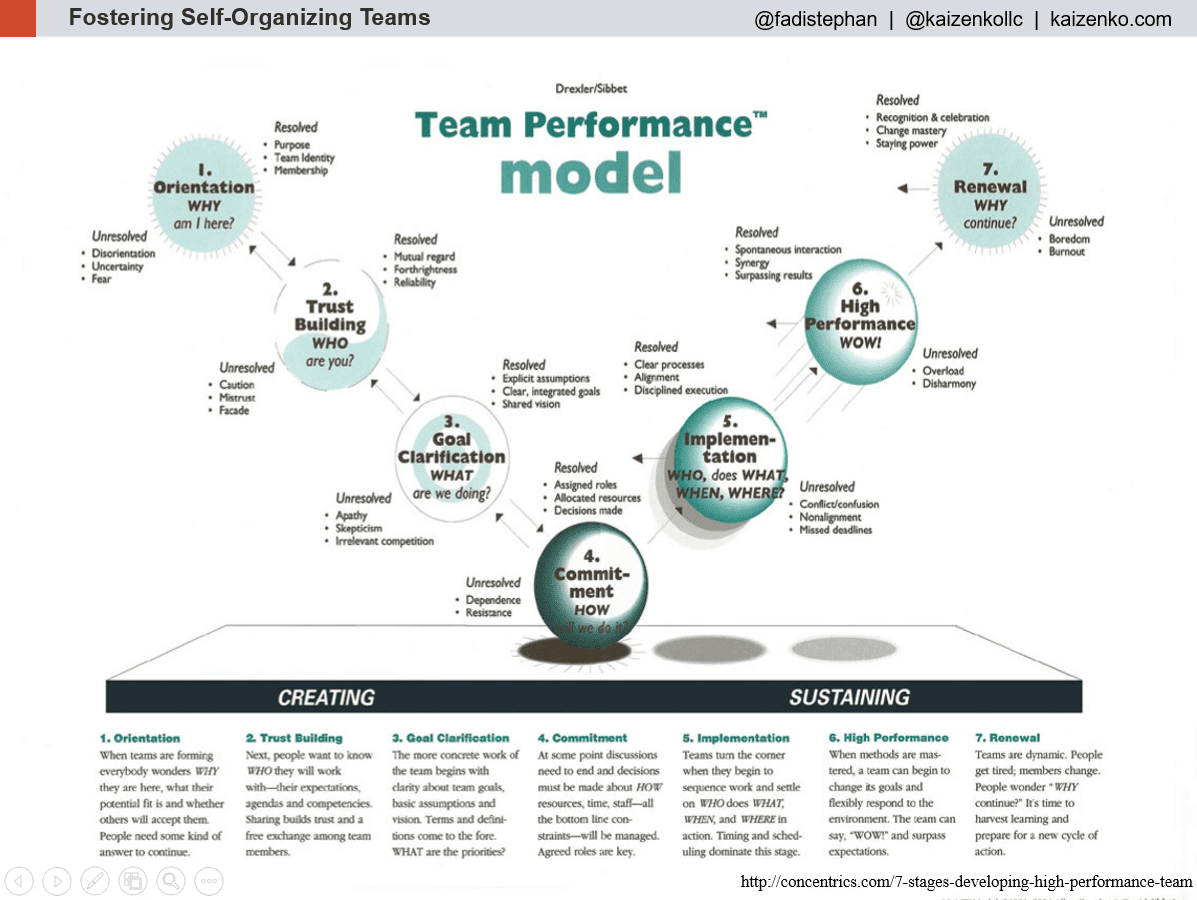Many of us have experienced teams that function seamlessly from the outset: tasks are executed smoothly, mutual respect feels natural, and deadlines cause no panic.
However, numerous other teams experience ongoing tension, misunderstandings, or conflicts. Often, this tension isn't due to an unwillingness to cooperate but rather stems from a lack of clarity, trust, or shared goals from the very beginning.
This is where team development models come into play, providing us with a roadmap explaining how people collaborate, communicate, and evolve together over time.
Classic Starting Point: Tuckman's Model
If you've heard of any team development theory, it's likely Tuckman’s Model, which outlines five stages:
- Forming – Team members get acquainted; roles are unclear, and everyone acts cautiously.
- Storming – Conflicts arise as personalities and opinions clash, increasing tension.
- Norming – The group begins resolving conflicts, establishing norms, and building cooperation.
- Performing – The team works cohesively, focusing on common goals and achieving high productivity.
- Adjourning – The team completes tasks and either disbands or moves to new challenges.
Tuckman’s model serves as an excellent introduction to group dynamics, highlighting conflict (Storming) as a natural part of growth.
Yet, Tuckman's sequence might seem overly linear for modern workplace challenges. Today’s teams are rarely static; people come and go, objectives shift, and market conditions can change overnight.
This linear approach doesn't always match real-world complexities. Additionally, crucial elements like trust and emotional safety—highlighted by research such as Google's "Project Aristotle"—are not explicitly emphasized in Tuckman’s stages.
Drexler-Sibbet Model
The Drexler-Sibbet Model expands upon Tuckman’s framework, emphasizing emotional and interpersonal elements crucial to team success or failure. It consists of seven stages:
- Orientation – "Why are we here? What's the big picture?"
- Trust Building – "Can I rely on you, and can you rely on me?"
- Goal Clarification – "What exactly are we trying to achieve?"
- Commitment – "How do we make decisions, and what is each person’s role?"
- Implementation – "Let’s get working: who does what, and how do we track progress?"
- High Performance – "We’re excelling. How do we maintain this momentum?"
- Renewal – "What have we learned, and where do we go next?"
This model notably prioritizes trust and renewal, suggesting that teams often revisit previous stages, particularly when new members join or project scopes change.
Three Key Arguments in Favor of This Model
1. Explicit Focus on Trust and Emotional Dynamics
According to Google’s "Project Aristotle" (2017), psychological safety (trust) is the primary determinant of a high-performing team. Drexler-Sibbet explicitly dedicates a stage to building trust, whereas Tuckman addresses it only indirectly.
Example: Imagine a project team that, despite having all required skills, struggles to collaborate effectively. Later, it's discovered that half the team doubts the others' abilities. Once the team discusses these concerns and clarifies individual strengths, productivity significantly improves. Trust is essential for smooth collaboration.
2. Continuous Renewal and Adaptation
One main criticism of Tuckman’s model is its assumed linearity—from Forming to Storming to Norming—as if teams follow a straightforward path. Modern teams evolve cyclically; they might be "norming" on Monday and back to "storming" by Wednesday due to market shifts or changes in project roadmaps.
The Renewal stage in Drexler-Sibbet emphasizes regular reassessment, reflecting the ongoing nature of team development.
As management consultant Peter Drucker stated, "The greatest danger in times of turbulence is acting with yesterday’s logic." The Renewal stage ensures teams avoid complacency.
3. Practical Tools for Facilitators
The Drexler-Sibbet model includes visual tools and diagrams, such as the "Team Performance Model Chart," aiding in monitoring each stage. This provides facilitators with a clear map for resolving conflicts, clarifying goals, and sustaining performance.

While informative, Tuckman’s model lacks such comprehensive practical tools. Workshops frequently mention "Forming, Storming, Norming, Performing" but rarely provide guidance for recurrent conflicts. Drexler-Sibbet’s visualizations and structured questions simplify problem-solving.
Using Drexler-Sibbet Alongside (or Instead of) Tuckman
If you appreciate Tuckman’s simplicity, use the Drexler-Sibbet model as an extension. Begin with Tuckman’s overview and then focus on trust, roles, and reassessment with Drexler-Sibbet as your team evolves.
Main Idea
It’s tempting to assume that team spirit naturally arises when bringing together intelligent, motivated individuals. Reality often proves otherwise: teams struggle without trust and clear objectives.
The next time morale or productivity dips, consider that the issue may not be a lack of skills. Perhaps your team hasn't navigated the necessary stages for achieving genuine synergy.
To ensure your team doesn't just survive but thrives through collaboration and adaptability, embrace the Drexler-Sibbet model. It lays a strong foundation for trust, effectiveness, and growth.